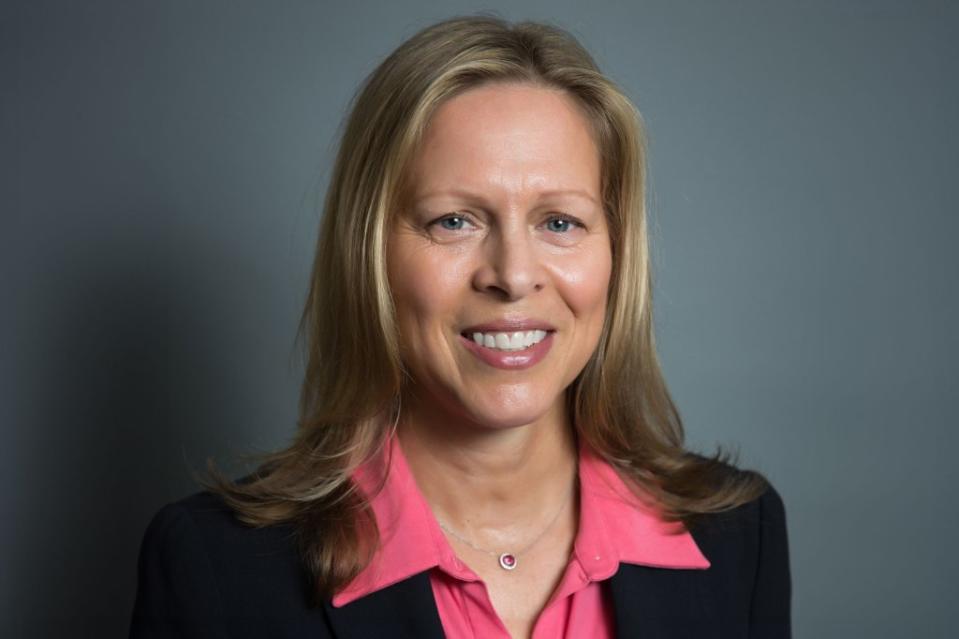The Big East commissioner wants to preserve the ‘basic principles’ of college sports even as players reap millions from NIL deals
Good morning, Broadsheet readers! Nextdoor's newly appointed CEO was accused of sexual harassment, women are leaving Goldman Sachs after hitting its glass ceiling, and the Big East commissioner knows we're all watching Caitlin Clark. Have a restful weekend!
- Big views. A decade ago, Val Ackerman wrote an influential paper laying out growth strategies for women's basketball, including some long-term and some easier fixes like a move from two halves to four quarters. Now the former WNBA president and current Big East commissioner is seeing that growth occur in real time at the professional and collegiate levels.
Ackerman grew up as a young athlete in the pre-Title IX era when girls' sports weren't guaranteed resources. She played college basketball at the University of Virginia (post-Title IX) and got her first job in sports as a lawyer for the NBA. She was the first president of the WNBA when it was founded in 1996. She became Big East commissioner in 2013.
In her current role, Ackerman says she's essentially juggling two jobs: the day-to-day business of keeping an athletic conference running across almost two dozen men's and women's sports at 11 schools and the ongoing transformation of college sports, thanks to reforms like name-image-likeness deals allowing players to earn significant income for the first time.
Exposure from those NIL deals is one factor in the extraordinary growth of women's college basketball—and of women's college sports in general. The uproar over the huge gap in equipment in men's and women's weight rooms at the NCAA basketball tournament in 2021 put a spotlight on inequities for male and female college athletes. Then there was the decision, only that year, to allow women's basketball to officially use the term "March Madness." (Ackerman says she didn't even realize it wasn't allowed before then and the rule change was "basic.") This year, a new ESPN deal valued women's college hoops at $65 million, a 10-times increase from its last media deal.

Every women's college basketball fan, old and new, this year is watching Caitlin Clark, who drove record viewership numbers for the Iowa Hawkeyes, part of the Big Ten. The Big Ten final was the most-viewed women's basketball game on CBS since 1999, averaging 3 million viewers. Ackerman calls Clark a "phenomenal talent" thanks to her "playmaking ability and amazing shooting range." "She'll bring a lot of fans along with her," Ackerman says of the effects of Clark's fandom on the sport as a whole as March Madness continues. (Ackerman spoke to me from a hotel room at the Mohegan Sun in Connecticut, where UConn and another basketball phenom, Paige Bueckers, defeated Georgetown in the Big East championship.)
As women's college sports become more of a business, Ackerman aims to support athletes pursuing brand and sponsorship deals while holding onto the more traditional ethos of college athletics, in which sports can offer students an opportunity to earn a degree without becoming their careers.
"The crystal ball is pretty cloudy here," she says of the future of college sports. "I just hope whatever model this morphs into can hold onto our basic principles."
Emma Hinchliffe
emma.hinchliffe@fortune.com
The Broadsheet is Fortune's newsletter for and about the world's most powerful women. Today's edition was curated by Joseph Abrams. Subscribe here.
This story was originally featured on Fortune.com

 Yahoo Finance
Yahoo Finance 